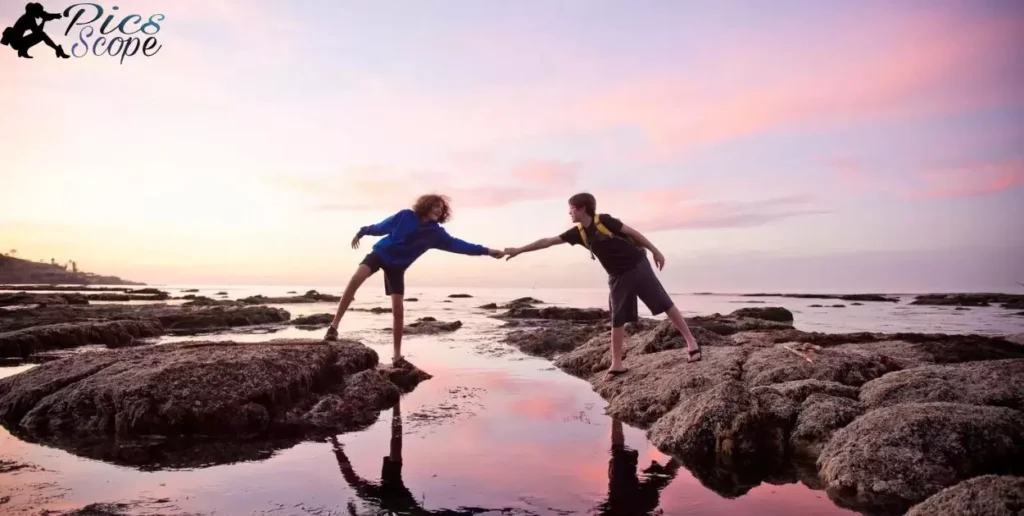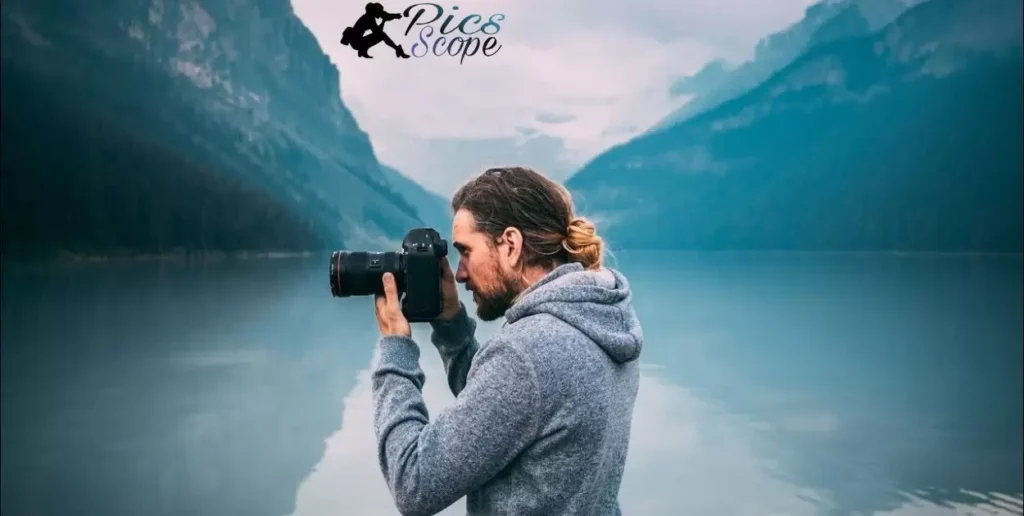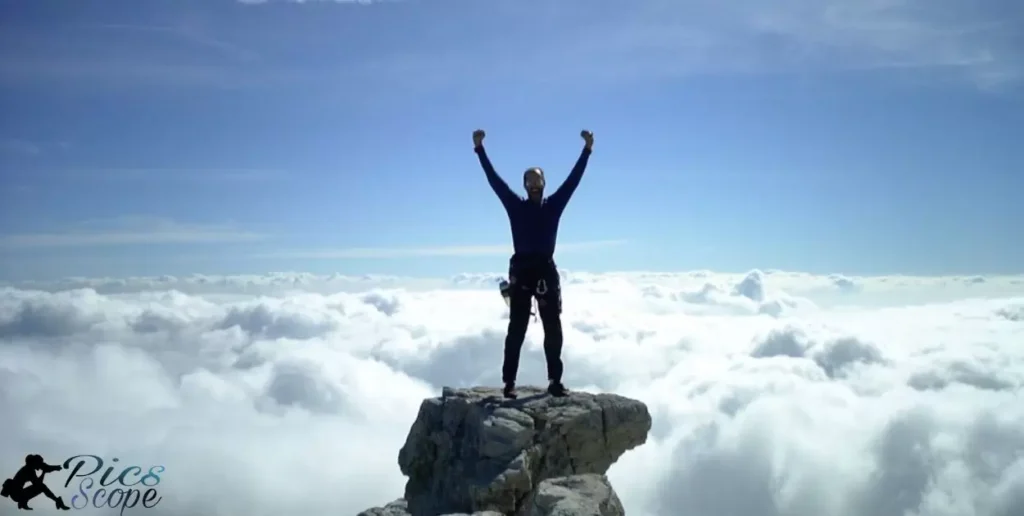Taking pictures allows one to capture and preserve moments in time. It lets people look back on happy memories from the past. Photographs let individuals re-live joyful situations even long after they occur.
Why taking pictures is important? Moments are fleeting, speeding by in the blink of an eye. With a photograph, precious instants from one’s life need not be forgotten. Scenes that might otherwise fade from memory can be relived again and again thanks to pictures.
Taking pictures is important because it lets people share their experiences with others. Photographs make it easy to show friends and family what someone has been up to. Pictures let loved ones who could not be there feel like they experienced an event too. Images help create a sense of togetherness even when people are apart.
What is photography and why did it become popular?
Photography is the process of making pictures by recording light on a light-sensitive surface like a film or digital sensor. When photography was invented in 1839, it allowed people to easily capture images of their lives for the first time.
Photography became very popular as camera technology advanced and became more affordable in the late 19th century. People enjoyed taking pictures of important moments and sharing photos with family and friends who lived far away.
The popularity of photography continued to grow throughout the 20th century. As cameras became smaller and portable, more people were able to record their daily lives and activities through photography. Pictures came to be seen as an important way for individuals and families to document memories and share experiences.
How does photography help preserve memories?

Taking photos allows people to freeze an instant and preserve happy memories from the past. Looking through old pictures lets individuals re-live joyful situations even after many years. Important life moments like vacations, graduations, weddings and births can all be captured and protected through images. Photography lets families pass cherished memories down through the generations.
Photographs also help people remember specifics about past experiences that might otherwise be forgotten. Pictures capture details like locations, clothes, weather and body language that reinforce recollections of the past. Images serve as visual cues that can spark powerful memories years later.
What role does photography play in sharing experiences with others?
Photography makes it easy for people to share moments from their lives with friends and family near and far. Images allow loved ones to feel like they experienced an event themselves even if they could not attend. Photos elicit reactions and comments that continue conversations about shared interests and activities across distances.
Sharing pictures on social media is also a popular way to stay connected with others digitally. Posts let followers comment on updates and feel involved in each other’s lives through images. Digital photography makes it simple to broadcast one’s experiences to large networks. Photos seen by others multiply the joy of creating memories.
How can photography help tell visual stories?
Combining multiple photos into an album or slideshow tells stories in a visual way. By sequencing pictures from beginning to end, viewers can follow a narrative of events. Candid shots capture moods and expressions that reveal aspects of people’s personalities and relationships.
Photography also helps document longer stories and arcs, like trips, projects or kids growing up over many years. Compiling images over time shows change and progress in a way words alone cannot easily describe. Visual stories have universal power to engage people of all backgrounds. Well-crafted photo essays continue important conversations.
Why is smartphone photography becoming so widespread?
Smartphone cameras make it effortless to document daily life. People constantly carry phones that can easily snap quick photos to remember small moments throughout the day. Advancements in phone cameras have made photos near-professional quality even for non-experts.
Social media has also encouraged more casual photography. Uploading fun picture updates provides quick, photo-based interactions between users. Phones let impromptu photo sessions occur anywhere, keeping imaging an impulsive, habitual part of digital culture. As technology evolves, mobile photography will likely remain an intuitive way to share experiences.
Does photography have mental health benefits?
Sharing photos fosters social connection and counters isolation, which positively impacts mental well-being. Looking back through photos helps reduce stress by triggering happiness through nostalgia. Documenting activities promotes self-esteem by showing progress over time.
Creating and curating photographic projects also provides relaxing escapes from worries. Hobbies like photography exercise creativity and give a sense of control, countering feelings of helplessness. Well-lit, colorful photos diffuse depression and lift moods physiologically too. Overall, photography appears to aid mental health whether relaxing alone or connecting with others through images.
What impact has digital photography had on the way we take and share photos?

Digital cameras changed everything by making photos instantly viewable. Photographers received immediate feedback and no longer had to wait to see results. Editing tools also made it fun to enhance photos creatively. Digital photos took up no physical space but could be endlessly duplicated.
Perhaps most significantly, digital images made sharing easy. Photos were easily transferred between cameras and computers to share worldwide through email and social media. Uploading to the internet gave images nearly infinite audiences and perpetuity. Digital tools turned casual photography into a seamless part of everyday life and conversations worldwide.
How does photography allow people to document important life events?
Photography preserves important life moments that might otherwise be forgotten over time. Weddings, graduations, births, birthdays, anniversaries and vacations and all captured for posterity through images. Looking back at photos of milestones provides perspective on personal growth throughout the years.
Albums of major events let families share experiences with younger generations who did not witness them firsthand. Photos connect relatives across distances by displaying shared heritages. Documenting rites of passage through images strengthens a family’s history and shared identity for years to come.
What can photography reveal about history and culture?
Historical photographs offer a unique view into periods before most people’s lifetimes. Images from the past show fashion, transportation, architecture and landscapes from eras most readers have only read about. Photographs provide authentic visual primary sources to deepen cultural knowledge.
Comparing photos across places and times reveals cultural trends and norms around ideas of beauty, parenting, work and play. Images uncover how holidays, ceremonies and pastimes were observed decades ago. Documentary photography captures disappearing cultural traditions and ways of life too. Photographs offer history lessons that textbooks alone cannot provide through their vivid first-hand witnessing of the past.
Why is photography important for hobbies like travel, nature, and sports?
Photography enhances enjoyment of hobbies by preserving experiences. Travel photos help relive adventures abroad and share exotic discoveries later. Nature lovers can document seasonal changes and species through images. Sports photographers capture exciting game moments fans may have missed live.
Photographs also encourage participants to new levels of involvement. Hobbyists challenge themselves to artfully frame subjects and find unique perspectives. Photography adds creative elements that prolong hobbyists’ engagement. Documenting progress through pictures motivates continuous improvement. Overall, photography heightens hobbies by offering new dimensions of interactive, collaborative fun.
How does photography encourage people to see the world differently?
Photography challenges people to observe their surroundings from fresh perspectives. Through a camera lens, ordinary scenes become opportunities to find aesthetic qualities and interesting angles. Framing shots encourages noticing hidden textures, patterns and colors within familiar views.
| Way Photography Shapes Vision | Explanation |
| Trains an eye for composition | Photographers search for balanced, visually pleasing arrangements of elements within a scene. |
| Reinvents negative space | Photos examine how empty areas or lack of visual elements can enhance a shot’s message. |
| Finds stories in everyday life | Framing shots reveals potential narratives within ordinary environments that others may overlook. |
| Appreciates fleeting light | Photography teaches an awareness of how natural light shifts scenes in artistic ways throughout the day. |
| Pursues unique points of view | Stepping back or crouching low encourages distinctive angles that enlighten familiar spots. |
Does photography have the power to evoke emotions and inspire creativity?

Viewing photos activates the same regions of the brain stimulated by directly experiencing places and events. Pictures immerse observers’ imagination to relive another’s experiences. Certain artistic photographs stir feelings deeply due to strong use of composition and subject matter.
Taking photos is also a process of finding beauty and interest within the mundane. Angles or edits that uplift dull subjects show new ways to appreciate daily life. Shutterbugs brainstorm innovative portrayals that influence how others later see similar sights. Photographers experiment with techniques that provoke thought and reactions through emotional storytelling.
What role does social media play in how photography is used and shared today?
Websites and apps simplified distributing photos immediately after they were taken. Platforms accelerated the traditional sharing process and connected photo-makers instantly to broad groups. “Followers” could double the joy of memorable moments by engaging through likes and comments.
Hashtags sorted photos for public interaction among worldwide networks. Media became a visual journal and conversation starter prompting spontaneous likes and remarks. Contextual tags integrated images within ongoing online relevant discussions. Photographers easily found additional images to comment on or draw inspiration from.
How has photography changed the way we view and experience the world?
When cameras documented daily life, priorities shifted to actively seek experiences worth preserving. Events gained importance based on their photograph potential over practical factors alone. Plans aimed to create memorable images rather than rush through moments.
Photography shaped traveling as visitors toured spots famous for iconic landscapes and sights. Photos from others’ adventures encouraged travel to witness sights previously only viewed remotely. Images seeded wanderlust and influenced when and where people sought experiences worth living in and photographing.
How does photography allow art and self-expression?
Posed portraits and carefully designed still-lifes encouraged photographers’ creativity from the earliest days. Rule-breaking snaps liberated imagery from stiff conventions. Experimental techniques like double exposures blended realities uniquely.
Online sharing networks supported all levels of talent. Mobile phone “point-and-shoots” lowered technical barriers so snapshots had artistic potential. Unusual perspectives or mindful editing turned daily life into personal works. Photographs expressed individual interests and emotions through visual storytelling.
What questions does smartphone photography raise about privacy and consent?
Connected cameras disrupted assumptions of public versus private spaces. Potential photo subjects deserve consideration regarding how and where their images appear online. Photographers must respect expectations of consent, especially in crowds.
Rights to images shared without permission complexify as photos circulate online. Policy questions arose around incidental figures, censorship, and legal ownership of public photos. Photographers hold responsibility for respecting privacy depending on context and intended distribution of any mobile images. ongoing discussions seek reasonable solutions balancing interests of photographers and photograph subjects.
Why is learning basic photography a useful creative skill?
Understanding fundamental photographic concepts aids visual communication abilities. Mastering camera controls, composition and lighting transfers skills to various fields. Photography cultivates problem-solving through experimenting with different techniques.
- Transferable “photographic thinking” benefits visual careers like design, filmmaking, and presentations
- Develops patience and attention to detail applicable in many hobbies and jobs
- Fosters visual literacy to “see like a camera” and observe details creatively
- Encourages creative expression and storytelling through angles and image editing
- Teaches audio-visual communication valuable for social media use
- Reinforces comprehension of difficult concepts when learning subjects like science and history
- Sparks curiosity to actively notice and capture one’s surroundings in engaging ways
How can photography be used as a tool to learn and teach others?

Classroom photos document activities and aid recollection. Examples break down concepts visually. Students photograph assigned subjects to demonstrate comprehension and appreciation of details.
Teachers utilize photography to foster curiosity about sciences and history. Assignments encourage close observation of structures, organisms and specimens. Photos teach photography skills while exposing pupils to art, composition and technology. Student-made educational images benefit others when shared publicly.
What impact might advances in photography like AI and augmented reality have?
AI may automate tagging and organization to relive photo collections through storytelling. Filters powered by neural networks could enhance everyday snapshots remarkably. AI background removal opens possibilities. Augmented reality overlays informative lens-based details onto scenes in real-time.
AR could combine photos from different times into seamless blends revealing changes. Together AI and AR may inspire novel types of photographic expressions and experiences. Technical evolution continues driving photography to enrich daily life and push creative boundaries in yet unforeseen directions.
How will photography continue to evolve in the future?
Future cameras may phase out physical devices entirely for software-based lenses. Connected digital components envision settings from a photographer’s mind. Advanced sensors could surpass human vision through zoom and low-light capabilities.
Printing photos may go obsolete as digital images share experiences instantly any distance. Longer videos replacing stills as primary format for documentation and visual storytelling. Emerging capture methods like 360 imaging or holograms transform the photographic medium. Whatever form it takes, photography will persist as a way for humans to creatively document and engage with the world.
FAQ’s
How does photography help preserve memories?
Photography allows people to freeze moments in time and revisit happy memories even years later.
What role does sharing photos play?
Sharing photographs is a way for people to stay connected with friends and family both near and far by allowing others to experience special events.
How has the ability to take photos evolved?
Advances like digital cameras and smartphones have made photography techniques simpler and more accessible, allowing people to easily capture moments throughout their daily lives.
Does photography have any mental health benefits?
Yes, photographic activities and looking through old pictures can reduce stress and boost moods by triggering feelings of happiness and nostalgia. It can also foster social connection.
How can learning photography be useful?
Understanding basic photographic skills helps develop visual literacy and can boost creativity. The fundamentals also translate to visual hobbies and fields like design, teaching people to see the world from a new perspective.
Conclusion
Taking photos is an integral part of modern life and culture. It has become effortless to casually document daily experiences and special occasions thanks to widely available camera technology. We should remain conscious of the important role that photography continues to play in how we create and share meaningful memories.
Looking back at images from the past provides perspective on our personal growth and connections to loved ones over the years. As formats and techniques change, photography will surely evolve but its power to tangibly preserve moments in time and visually spark joyful recollections ensures that documenting life through pictures will always be significant.







